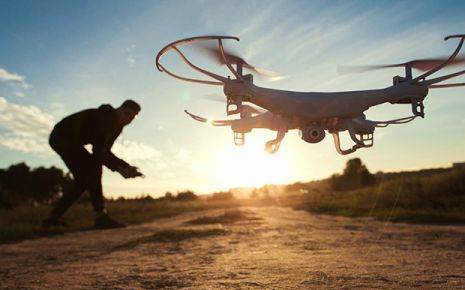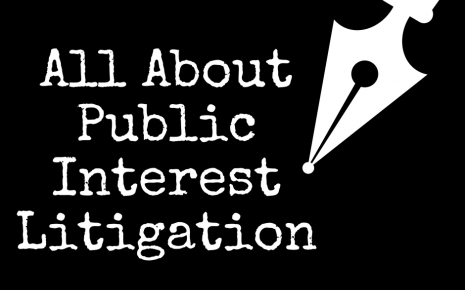Drone Regulations in India
The Ministry of Civil Aviation has notified the Unmanned Aircraft System Rules,
2021[1] which have come into effect on 15th March, 2021. These Rules replace the
Civil Aviation Requirements (CAR) for civil use of Remotely Piloted Aircraft
System (RPAS)[2] which have regulated the space since 2018.
UAS classified as nano, micro, small, medium and large unmanned aircraft based on the maximum all up weight including its pay load ranging from <250gram to 150 kilograms. Nano UAs can be classified in the next higher category if it exceeds performance parameters of flight speed and height. [Rule 4]
Mandatory for individuals and companies to obtain approval from the DGCA to import, manufacture, trade, own or operate drones [Rule 9(3)]
No Permission- No Take-off (NPNT) policy adopted for all UAS except for those in the nano category [Rule 9(8)(g)]
Micro and small UAS are not permitted from flying above 60m and 120 m, respectively. [Rule 29]
All UAS, except nano category, have to be equipped with flashing anti-collision strobe lights, flight data logging capability, secondary surveillance radar transponder, real-time tracking system and 360 degree collision avoidance system, among others. [Rule 9(8) and 9(11)]
All UAS including nano category, are required to be equipped with Global Navigation Satellite System, Autonomous Flight Termination System or Return to Home option, geo-fencing capability and flight controller, among others. [Rule 9(8) and 9(11)]
UAS prohibited from flying in strategic and sensitive location, including near airports, defence airports, border areas, military installations/facilities and areas earmarked as strategic locations/vital installations by the Ministry of Home Affairs. [Rule 37]
Nano, micro and small UAS operations limited to within the visual line of sight and are prohibited from delivery of goods. [Rule 28(3)]
Delivery of goods permitted by medium and large UAS. [Rule 28(3)]
Research and development (R&D) organisations, including start-ups, authorised UAS manufacturer, any accredited recognised institution of higher education located in India, are permitted to carry out R&D of UAS only after obtaining authorisation from the DGCA. [Rule 57]
Penalties ranging between rupees ten thousand and one lakh for individuals, and for organisations, a 200, 300 and 400% of the amount specified for individuals, based on the size of the organisation. [Rule 77]
Important Definitions:
Some definitions, listed under Rule 2 of the UAS Rules, 2021, which are of relevance are as follows:
Restricted/ Prohibited Areas:
Rule 37 of the act enlists the areas where unmanned aircrafts are prohibited from flying.
It reads as follows:
37. No Operation Area:
Privacy Concerns:
Rule 38 of the Act imposes a restriction on images or other such data captured by an unmanned aircraft. Data/ images are not allowed to be collected in the no-operation areas. Moreover, a person's and his property's information may be captured only after attaning prior permission for the same.
The provision reads as follows:
38. Imagery or Data capturing by Unmanned Aircraft in flight:
Other provisions to ensure general safety that may be relevant are listed under Rule 45:
45. General Safety: No person shall, act in any manner, either directly or indirectly, so as to:
Penalties/ Offences for Contravention
Rule 76 of the act lists offences in case of contraventions of provisions of the UAS Rules, 2021. Serial No. 6 of the table given under R.76(5) prescribes Rs. 50,000 as the amount for compounding of offence committed by individual in case s/he flies an unmanned aircraft over a no- operation area. The amount for breach of Rule 45 is Rs. 25,000.
End-Notes:
Key Highlights of the UAS Rules, 2021:
UAS categorised as airplane, rotorcraft and hybrid with further categorisation as remotely piloted aircraft, model remotely piloted aircraft and autonomous unmanned aircraft system. [Rule 3]UAS classified as nano, micro, small, medium and large unmanned aircraft based on the maximum all up weight including its pay load ranging from <250gram to 150 kilograms. Nano UAs can be classified in the next higher category if it exceeds performance parameters of flight speed and height. [Rule 4]
Mandatory for individuals and companies to obtain approval from the DGCA to import, manufacture, trade, own or operate drones [Rule 9(3)]
No Permission- No Take-off (NPNT) policy adopted for all UAS except for those in the nano category [Rule 9(8)(g)]
Micro and small UAS are not permitted from flying above 60m and 120 m, respectively. [Rule 29]
All UAS, except nano category, have to be equipped with flashing anti-collision strobe lights, flight data logging capability, secondary surveillance radar transponder, real-time tracking system and 360 degree collision avoidance system, among others. [Rule 9(8) and 9(11)]
All UAS including nano category, are required to be equipped with Global Navigation Satellite System, Autonomous Flight Termination System or Return to Home option, geo-fencing capability and flight controller, among others. [Rule 9(8) and 9(11)]
UAS prohibited from flying in strategic and sensitive location, including near airports, defence airports, border areas, military installations/facilities and areas earmarked as strategic locations/vital installations by the Ministry of Home Affairs. [Rule 37]
Nano, micro and small UAS operations limited to within the visual line of sight and are prohibited from delivery of goods. [Rule 28(3)]
Delivery of goods permitted by medium and large UAS. [Rule 28(3)]
Research and development (R&D) organisations, including start-ups, authorised UAS manufacturer, any accredited recognised institution of higher education located in India, are permitted to carry out R&D of UAS only after obtaining authorisation from the DGCA. [Rule 57]
Penalties ranging between rupees ten thousand and one lakh for individuals, and for organisations, a 200, 300 and 400% of the amount specified for individuals, based on the size of the organisation. [Rule 77]
Important Definitions:
Some definitions, listed under Rule 2 of the UAS Rules, 2021, which are of relevance are as follows:
- (x) Drone means an unmanned aircraft
- (zi) Prohibited Area means the airspace of defined dimensions, above the land areas or territorial waters of India within which the flights of unmanned aircraft are not permitted, or any installation or notified port limits identified by the Central Government beyond the territorial waters of India, at any time under any circumstances;
- (zp) Restricted Area means the airspace of defined dimensions above the land areas or territorial waters of India within which the flight of unmanned aircraft is restricted;
- (zw) Unmanned Aircraft means an aircraft, which is intended to operate with no pilot on board;
- (zx) Unmanned Aircraft System means an unmanned aircraft and its associated elements, which are operated with no pilot on board;
Restricted/ Prohibited Areas:
Rule 37 of the act enlists the areas where unmanned aircrafts are prohibited from flying.
It reads as follows:
37. No Operation Area:
- No person shall fly or assist in flying an unmanned aircraft over
any of the areas specified in sub-rule (2), save, in accordance with the
conditions specified by the Central Government.
- No unmanned aircraft shall be flown:
- Within a distance of 5 kilometer from the perimeter of international airports at Mumbai, Delhi, Chennai, Kolkata, Bengaluru and Hyderabad;
- Within a distance of 3 kilometer from the perimeter of any civil, private or defence airports, other than those mentioned in clause(a);
- Above the Obstacle Limitation Surfaces (OLS) or Procedures for Air Navigation Services-Aircraft Operations (PANS-OPS) surfaces, whichever is lower, of an operational aerodrome, specified in the rules related to Height Restrictions for Safeguarding of Aircraft Operations;
- Within permanent or temporary Prohibited, Restricted and Danger Areas including Temporary Reserved Area (TRA), and Temporary Segregated Area (TSA), as notified in Aeronautical Information Publication (AIP) by Airport Authority of India;
- Within 25 kilometer from international border which includes Line of Control (LoC), Line of Actual Control (LAC) and Actual Ground Position Line (AGPL);
- Beyond 500 meter (horizontal) into sea from coast line provided the location of ground station is on fixed platform over land;
- Directorate General of Lighthouses and Lightships (DGLL) lighthouses and coastal radar stations of the Indian Coast Guard;
- Within 3 kilometer from perimeter of military installations/ facilities/ where military activities/ exercises are being carried out unless clearance is obtained from the local military installation/facility;
- Within 5 kilometer radius from Vijay Chowk in Delhi. However, this is subject to any additional conditions/ restrictions imposed by local law enforcement agencies/ authorities in view of the security.
- Within 2 kilometer from perimeter of strategic locations/ vital installations notified by Ministry of Home Affairs unless clearance is obtained from Ministry of Home Affairs;
- Within 3 kilometer from radius of State Secretariat Complex in State Capitals;
- From a mobile platform such as a moving vehicle, ship or all types of sea going vessels including makeshift floating platforms or aircraft; and
- Over eco-sensitive zones around National Parks and Wildlife Sanctuaries
notified by Ministry of Environment, Forests and Climate Change without
prior permission.
- The Central Government or any other person authorised in this behalf by the Central Government may permit flying of unmanned aircraft in select restricted areas on request made by any Government Authority or any airport Operator in exceptional circumstances.
Privacy Concerns:
Rule 38 of the Act imposes a restriction on images or other such data captured by an unmanned aircraft. Data/ images are not allowed to be collected in the no-operation areas. Moreover, a person's and his property's information may be captured only after attaning prior permission for the same.
The provision reads as follows:
38. Imagery or Data capturing by Unmanned Aircraft in flight:
- No person shall capture, or cause or permit to be captured, from an
unmanned aircraft in flight, any imagery or data of the areas specified in
sub- rule (2) of rule 37 or areas prohibited by any authority:
Provided that the Central Government or any other person authorised by the Central Government may, by order in writing direct that such restrictions shall not apply to capture of imagery or data in the No Operation Area as specified in sub-rule (2) of rule 37.
- An imagery or data may be captured by an unmanned aircraft after
ensuring the privacy of a person, its property, and is permissible under
law.
Other provisions to ensure general safety that may be relevant are listed under Rule 45:
45. General Safety: No person shall, act in any manner, either directly or indirectly, so as to:
- endanger safety and security of an unmanned aircraft system or unmanned aircraft system operation;
- cause interference with the normal functioning of any facility established for the safe and secure operation of unmanned aircraft system;
- obstruct or distract the functioning of any person entrusted with any responsibility towards ensuring safe and secure operation of unmanned aircraft system;
- endanger safety and security of any person or property; and
- endanger safety and security of a manned aircraft or its operation:
Penalties/ Offences for Contravention
Rule 76 of the act lists offences in case of contraventions of provisions of the UAS Rules, 2021. Serial No. 6 of the table given under R.76(5) prescribes Rs. 50,000 as the amount for compounding of offence committed by individual in case s/he flies an unmanned aircraft over a no- operation area. The amount for breach of Rule 45 is Rs. 25,000.
End-Notes:
- Unmanned Aircraft Systems (UAS) Rules, 2021, http://egazette.nic.in/WriteReadData/2021/225860.pdf
- Civil Aviation Requirements, Remotely Piloted Aircraft System, http://bathindapolice.in/civil.pdf.
Law Article in India
Legal Question & Answers
Lawyers in India - Search By City
LawArticles
How To File For Mutual Divorce In Delhi

How To File For Mutual Divorce In Delhi Mutual Consent Divorce is the Simplest Way to Obtain a D...
Increased Age For Girls Marriage

It is hoped that the Prohibition of Child Marriage (Amendment) Bill, 2021, which intends to inc...
Facade of Social Media

One may very easily get absorbed in the lives of others as one scrolls through a Facebook news ...
Section 482 CrPc - Quashing Of FIR: Guid...

The Inherent power under Section 482 in The Code Of Criminal Procedure, 1973 (37th Chapter of t...
The Uniform Civil Code (UCC) in India: A...

The Uniform Civil Code (UCC) is a concept that proposes the unification of personal laws across...
Role Of Artificial Intelligence In Legal...

Artificial intelligence (AI) is revolutionizing various sectors of the economy, and the legal i...








Please Drop Your Comments